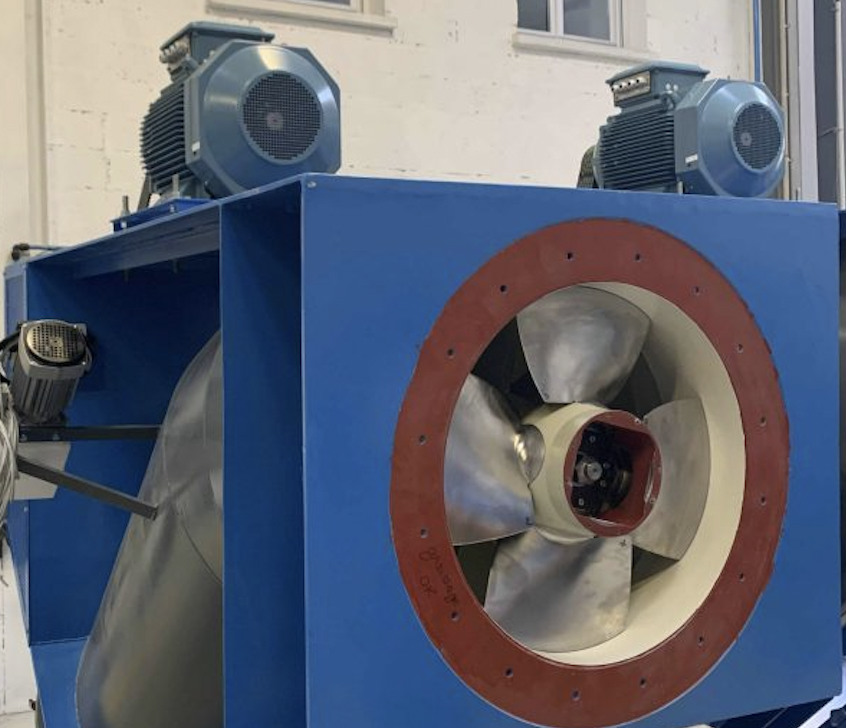What is a Kaplan Turbine and What are its Characteristics?
The Kaplan turbine facilitates the axial direction of water towards the turbine. In the Kaplan turbine, a type of turbine that rotates axially, there are usually pressure differences between the water’s entry and exit. Mainly used in river-type hydroelectric power plants, these types of turbines can also adapt to different flow levels thanks to their adjustable blades. In our content, you can find answers to many questions such as what is a Kaplan turbine, where it is used, and what its characteristics are.
What is a Kaplan Turbine?
Various water turbines are designed for use in hydroelectric power plants in general. Among these, Kaplan turbine types are quite common. These water turbine types, which stand out with their adjustable blades, are of the propeller type. The Kaplan turbines, patented by engineer Viktor Kaplan in 1913, also experience a pressure difference between the water’s entry and exit because they rotate axially. Their operating conditions are high flow rate and low head. Designed mainly for use in river-type hydroelectric power plants, they are also known as classic river turbines.
What is a Mini Grid Kaplan Turbine?
Mini grid Kaplan turbines are a popular type of Kaplan turbine designed for small-scale hydroelectric energy production. Their operating principle is similar to classic and large Kaplan turbines. The only significant difference is their use in smaller-scale applications.
About Viktor Kaplan, the Inventor of the Kaplan Turbine
Viktor Kaplan (1876 – 1934) was an Austrian mechanical engineer and inventor who spent most of his professional life at the German Technical University in Brno.His primary area of interest was water turbines, and he conducted many experiments to adapt the machines used in his time to different flow and gradient values.His effort to improve existing turbines led him to find his own design: an axial flow turbine with adjustable propeller blades.Between 1912-13, Kaplan applied for patents for his inventions. These turbines, named after him, began to be produced in large quantities and started being used in other countries.The Kaplan turbine he invented has become one of the fundamental components of modern hydroenergy.How Does a Kaplan Turbine Work? In the Kaplan turbine, water is directed axially towards the turbine. Then, it flows towards the turbine’s propeller-like blades. This flow towards the blades not only causes the turbine to rotate but also generates the mechanical energy used for energy production. One of the most important features of Kaplan turbines is having adjustable blades. This allows Kaplan turbines to adapt to different flow conditions with high efficiency. Since the blade angles can be changed depending on the load, they can operate with high efficiency at every load (at every water flow rate).
Where is the Kaplan Turbine Used?
These types of water turbines are mainly designed for use in rivers and low-head dams. In fact, since they are used in river-type hydroelectric power plants, they are also referred to as “classic river turbines.”
Components of the Kaplan Turbine:
The Kaplan turbine generally consists of 6 different parts. These are as follows:
Spiral Casing: Water is directed towards the Kaplan turbine through a spiral casing in an evenly distributed manner. Spiral casings help direct the water towards the turbine’s propeller.
Guide Vanes: Guide vanes control the speed and direction of the water flow. Also known as adjustable vanes. They ensure the water reaches the turbine blades at the optimum angle, thus increasing energy efficiency.
Runner Blades: The runner blades are the heart of Kaplan turbines. These are also adjustable blades. It’s possible to adjust the runner blades according to the flow speed of the water and the turbine’s needs. This adjustable structure allows the turbine to operate with maximum efficiency under different flow and head conditions. This is one of the most important features of Kaplan turbines.
Turbine Shaft: The rotation of the propeller is transferred to the turbine shaft. Through this shaft, the rotation of the propeller is converted into mechanical energy. This mechanical energy is then transferred to the generator in the next steps.
Generator: The generator, which receives the mechanical energy generated by the turbine shaft, actually provides electrical energy. The rotation of the turbine shaft is converted into electrical energy through the generator.
Draft Tube: Finally, the draft tube is the part where the water is discharged. This tunnel is located beneath the turbine. By reducing the water’s pressure, the draft tube creates a negative pressure which increases the water’s entry speed to the turbine.
Advantages of Kaplan Turbines:
One of the most significant advantages of these water turbines is the high efficiency values they offer. They show noteworthy performance in terms of efficiency across a wide flow rate scale. Adjustable propeller blades are among the most distinctive features of Kaplan turbines. These blades, with their adjustable structure, adapt to different flow and load conditions. They can operate even in low head conditions, making them environmentally friendly as well.
Disadvantages of Kaplan Turbines:
Kaplan turbines can be costly initially, especially due to their complex designs . Secondly, there is a risk of cavitation (the formation of gas bubbles within a liquid). Especially at high flow rates, this risk can emerge and lead to damage. Their generally large size can also pose various challenges during the installation phase.

